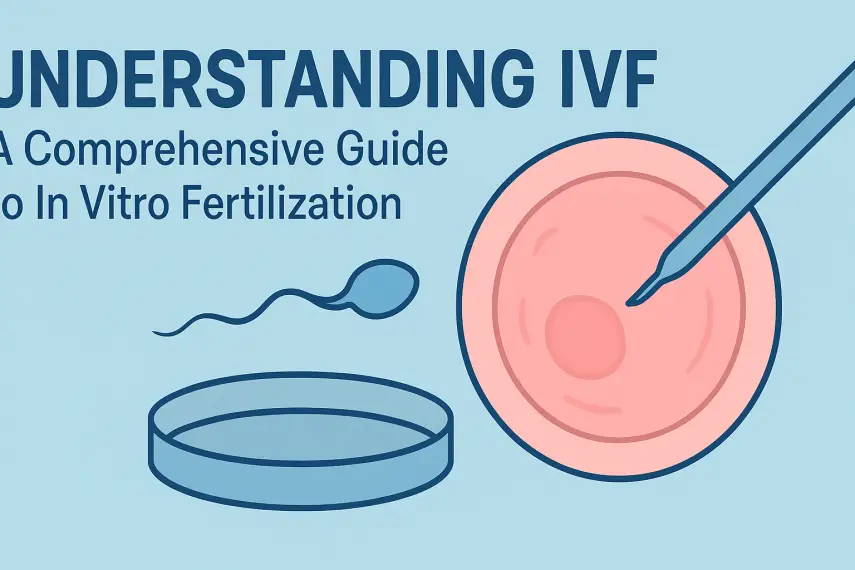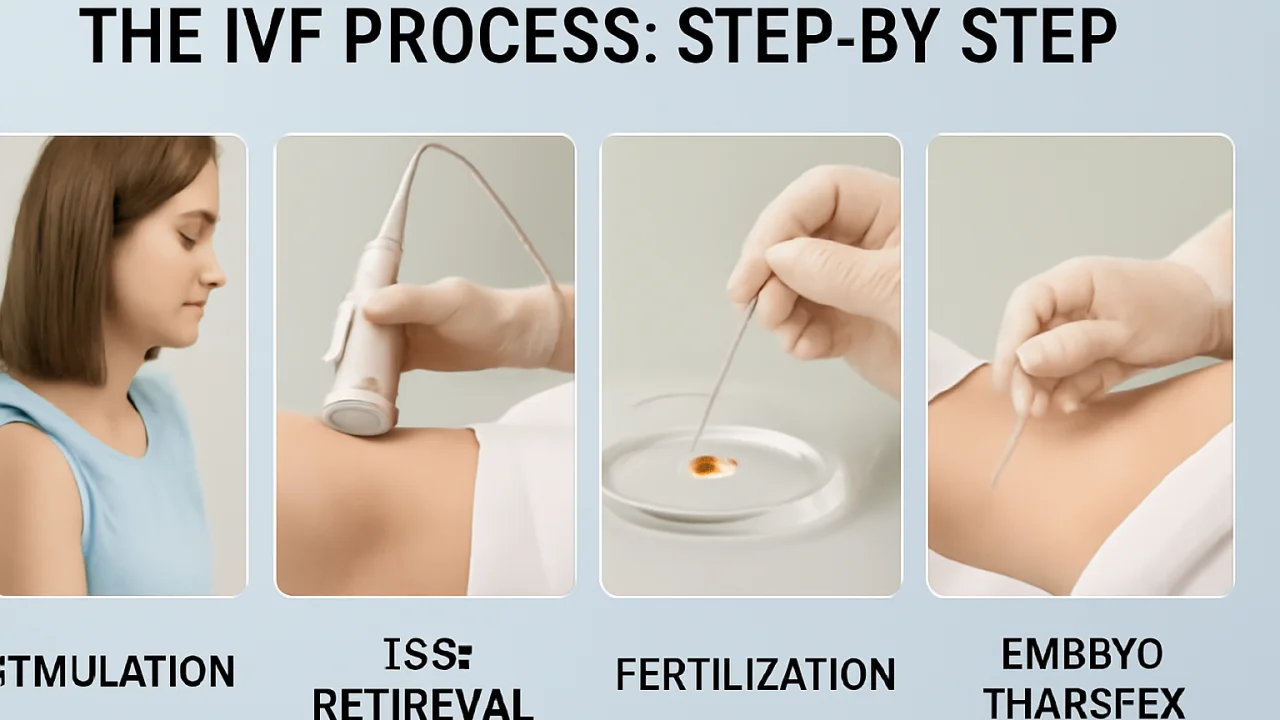
Understanding IVF: A Comprehensive Guide to In Vitro Fertilization
📑 Contents
Understanding IVF: A Comprehensive Guide to In Vitro Fertilization
In vitro fertilization (IVF) has become a beacon of hope for millions of couples struggling with infertility. Since the birth of the first "test-tube baby" in 1978, IVF has evolved into one of the most effective assisted reproductive technologies. This guide walks you through the IVF process, success factors, costs, risks, and practical tips, offering a thorough understanding of what to expect on your fertility journey.
What is IVF?

IVF, or in vitro fertilization, is a medical procedure where eggs are retrieved from a woman’s ovaries and fertilized with sperm in a laboratory. The resulting embryos are cultured for several days before one or more are transferred to the uterus, aiming for a successful pregnancy. IVF can use a couple’s own eggs and sperm or donor materials, depending on individual needs.
Who Needs IVF?

IVF is not always the first step in infertility treatment, but it is often recommended in the following cases:
- Blocked or damaged fallopian tubes
- Male factor infertility (low sperm count or motility)
- Endometriosis
- Unexplained infertility
- Genetic disorders (when preimplantation genetic testing is needed)
- Fertility preservation (such as for cancer patients before treatment)
- Same-sex couples or single parents using donor eggs or sperm
The IVF Process: Step-by-Step

IVF is a multi-stage journey, typically taking four to six weeks per cycle. Here’s a breakdown of the standard steps:
1. Ovarian Stimulation
Fertility medications stimulate the ovaries to produce multiple eggs. Regular blood tests and ultrasounds monitor progress.
2. Egg Retrieval (Aspiration)
Once follicles are mature, eggs are collected through a minor surgical procedure under sedation, using ultrasound guidance.
3. Sperm Collection
Sperm is provided by a partner or donor. In cases of severe male infertility, surgical sperm retrieval may be necessary.
4. Fertilization
Eggs and sperm are combined in the lab. Sometimes, intracytoplasmic sperm injection (ICSI) is used, injecting a single sperm directly into an egg.
5. Embryo Culture
Fertilized eggs (embryos) are monitored for several days. The healthiest embryos are selected for transfer.
6. Embryo Transfer
One or more embryos are placed into the uterus using a thin catheter. Any remaining high-quality embryos may be frozen for future use.
7. Pregnancy Test
About 10-14 days later, a blood test checks for pregnancy.
| Stage | Duration | Main Activities |
|---|---|---|
| Ovarian Stimulation | 10-14 days | Hormone injections, monitoring |
| Egg Retrieval | 1 day | Minor surgery under sedation |
| Fertilization & Embryo Culture | 3-7 days | Lab fertilization, embryo growth |
| Embryo Transfer | 1 day | Catheter transfer to uterus |
| Pregnancy Test | 10-14 days after transfer | Blood test for hCG hormone |
Success Rates and Factors Affecting IVF Outcomes
IVF success rates have improved significantly, but outcomes still vary based on several factors:
- Age: Younger women generally have higher success rates. Women under 35 may see live birth rates of 40-50% per cycle, while rates drop to under 10% for women over 42.
- Cause of infertility: Certain diagnoses respond better to IVF than others.
- Egg and sperm quality: Healthier gametes improve embryo viability.
- Embryo quality: Advanced genetic screening can help select the healthiest embryos.
- Lifestyle factors: Smoking, obesity, and stress can negatively impact outcomes.
It’s important to review clinic-specific success rates, which are publicly reported in many countries.
IVF Costs: What to Expect
IVF can be expensive, and costs vary widely by country, clinic, and individual needs. Here is a general breakdown:
| Item | Estimated Cost |
|---|---|
| Initial consultation | $200 - $500 |
| IVF cycle (medications, procedures, lab) | $12,000 - $15,000 |
| ICSI (if needed) | $1,000 - $2,500 |
| Genetic testing (PGT-A/PGD) | $3,000 - $7,000 |
| Embryo freezing & storage | $1,000 - $2,000 + annual storage |
Some insurance plans cover parts of IVF, and certain clinics offer package deals or refund programs. It’s crucial to clarify all costs up front.
Risks and Considerations
While IVF is generally safe, it carries some risks:
- Ovarian hyperstimulation syndrome (OHSS): A reaction to fertility drugs causing swollen, painful ovaries.
- Multiple pregnancies: More than one embryo can implant, increasing risks for both mother and babies.
- Procedure-related risks: Infection, bleeding, or injury during egg retrieval (rare).
- Emotional toll: IVF can be physically and emotionally demanding, with no guarantee of success.
Discuss all risks with your fertility team and consider counseling or support groups to help manage stress.
Tips for a Successful IVF Cycle
While some factors are beyond your control, you can take steps to optimize your chances:
- Maintain a healthy weight and balanced diet.
- Avoid smoking, excessive alcohol, and recreational drugs.
- Manage stress through mindfulness, yoga, or counseling.
- Follow all medication and appointment instructions from your clinic.
- Seek support from partners, friends, or fertility groups.
FAQs about IVF
1. How many IVF cycles does it typically take to get pregnant?
Many couples require more than one cycle. About 65% of women under 35 will have a live birth after three IVF cycles, but results vary by age and cause of infertility.
2. Is IVF painful?
IVF involves injections and minor procedures, which may cause discomfort but are generally well tolerated. Egg retrieval is done under sedation to minimize pain.
3. Can IVF guarantee a baby?
No fertility treatment can guarantee a baby. IVF offers higher success rates than many other options, but outcomes depend on many factors.
4. Are there long-term health risks for babies conceived via IVF?
Studies show most IVF-conceived children are healthy. There is a slightly higher risk of low birth weight or preterm birth, but no major long-term health differences have been found so far.
5. Can I choose the sex of my baby with IVF?
Preimplantation genetic testing (PGT) allows for sex selection, but this is only legal or ethical in certain countries and for specific medical reasons.
Summary
IVF has transformed the landscape of fertility treatment, offering hope to those facing infertility. By understanding the process, costs, risks, and ways to boost your chances, you can make informed decisions on your journey to parenthood. Always consult with a trusted fertility specialist and seek emotional support when needed. While the path may be challenging, IVF has helped millions of families realize their dreams.










